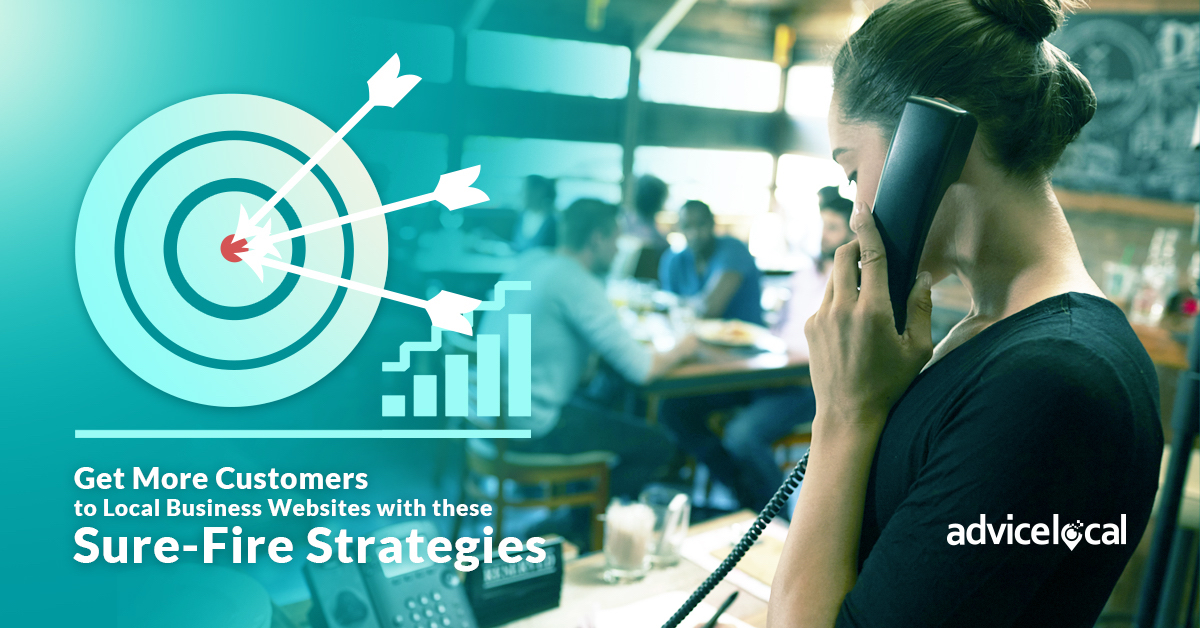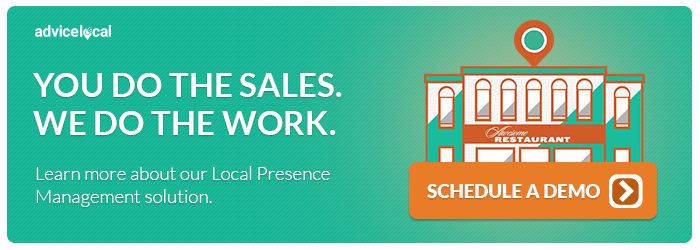How do you drive traffic to a local business website, then keep visitors active and engaged? Local businesses around the world are asking this question right now. In fact, marketing software developer Hubspot has found that 65% of surveyed companies report generating traffic and leads to be among the top marketing challenges they face.
The level of competition that exists locally – from big cities to small towns – means that a clear traffic and engagement plan is now essential to success. Thankfully, a local business can use a number of strategies to target the desired audience, drive visitors to the website and increase engagement in order to make conversions.
7 Sure-Fire Local Business Website Traffic Strategies
Let’s say that a business builds a clean, informative, user-friendly website. That’s a positive step forward! But wait a moment – if the business cannot drive traffic to the site it will still struggle.
Most of the traffic strategies we’ll discuss today can be applied to all kinds of websites, but the approach could vary by niche.
1. Put Local SEO to Work
Because so many regional searches begin via Google, using SEO (search engine optimization) is a perfect tool for local businesses. Search engine optimization has two components: on-page SEO and off-page SEO.
On-page SEO involves building content around targeted keywords, discovered keyword research, and local knowledge possessed by the business and/or marketing team. Schema markup should be used to signal important details about the site to search engines, including name, address and phone number (NAP), opening hours, contact details and user review scores. Optimizing a site also means improving page loading speed and developing a mobile-friendly layout.
Off-page SEO involves strategies like citation building and garnering backlinks through guest blogging and social media sharing. Citations on local and industry-relevant directories are an extremely important source of backlinks. And because local news sites are always seeking good stories, any newsworthy content you provide could be shared widely.
2. Consider Using Paid Social
Due to the level of targeting available, paid traffic is an effective option for local businesses. Platforms like Facebook let a business target precise groups of people using location, interests and demographic data to find an ideal audience. While the obvious platforms (Google, Facebook and Bing, for example) can be effective, remember the smaller sites when buying ads. Local forums, blogs and news sites can deliver small streams of highly targeted traffic. Also employ retargeting, as the business can keep advertising to interested parties by delivering ads to people who have already visited the site.
3. Content Marketing is a Must (No Matter the Industry)
Many local businesses today still ignore the potential rewards of content marketing. If a business decides that the industry or location doesn’t fit the mold to easily offer “interesting content,” they will skip it. Look for various angles that can get a response, such as articles examining the niche more broadly, behind-the-scenes guides, tutorials and industry interviews. Keep product demonstration videos on the to-do list, because whatever the audience, these are sought out and appreciated. In the case of video, Google’s own research shows that before visiting a store, nearly 50% of internet users look for videos related to a product or service.
The above content types may not gain a wider audience, but they will attract people that are most likely to become customers.
4. Stay Active on Social Media
For information about the business, a segment of the audience will always look to social media first. A lack of social media presence will stand out, but an inactive profile with very few updates? That can look even worse!
Maintain a consistent presence and stick to a posting schedule: add relevant business updates, special offers and industry news. Businesses can gradually build a following by integrating the use of hashtags and participating in online local groups.
5. Integrate CTAs (Call to Action) on Each Page or Post
Many local businesses start by using generic websites that are just not built for conversions. It’s important to showcase the brand and create a good impression, but also to build conversion goals into the site.
First define the goals for the business. A goal could be making a product purchase, joining an email newsletter, phoning the store and any action that brings a prospect closer to the business. Create a conversion goal for each page, using tools like Google Analytics, Google Tag Manager and UTM codes to track effectiveness.
6. Understand and Fulfill Visitor Intent
Understanding visitor intent can help a business directly meet consumer needs. While a Google search will bring some visitors to a site, others might have seen a YouTube video and now want to learn more about the business. Determine where traffic is coming from via analytics. It will allow the business to have pages constructed around visitor intent. If there’s a need, additional pages can be built for the different sources of traffic.
7. Keep Visitors Onsite Longer with Internal Linking
When it’s easy to navigate between pages, visitors show their satisfaction by staying on the site longer. Internal linking is the key to simplifying site navigation. The goal is to provide natural links to the appropriate pages. A small business site with minimal pages could use a simple menu to provide quick links to each site area. A larger site would require a more complex hierarchical structure and use categories to create different content hubs.
Building a blog is also an effective traffic strategy. Place contextual links throughout the content, and list related posts after the articles. This type of linking is important as it encourages people to click between different posts and become more engaged with the business.
Create a Solid Local Business Website Strategy That Delivers Results
According to the search marketing company WordStream, 72% of consumers conducting a local search visit a store that’s within five miles of them. That’s impressive, so ensure that the business hears that!
- Keep competitors in mind, because competition for local business is growing as more entrepreneurs understand the potential.
- Consumers are out there searching – ensure that the business is found via these sound local SEO strategies.
- Stay ahead by using a traffic and engagement plan that can deliver results, and as always, test and analyze.
Choosing the right traffic and engagement strategies can help a business fill the needs of local consumers as it satisfies its own goals. If you need help with meeting the needs of local customers, we’re here for you. Request a demo and get started today!




